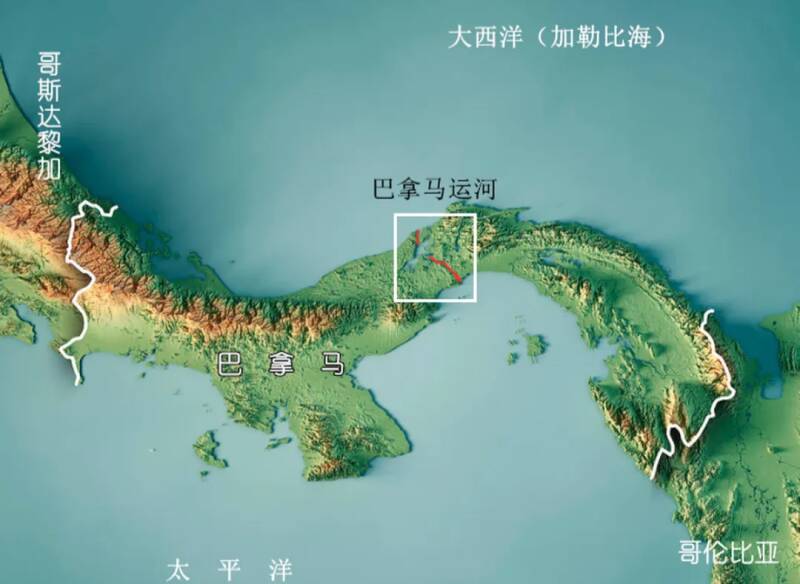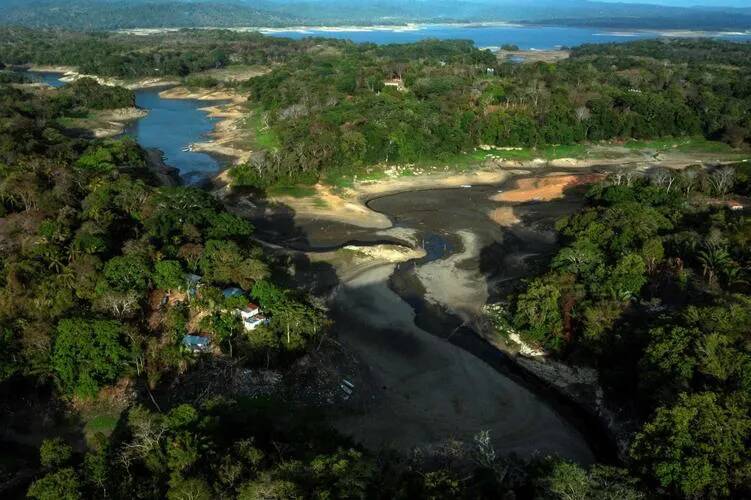The drought continues! Panamanian government launches "multimodal trunk canal" plan
Earlier, El Ni ñ o caused global climate anomalies, which affected many countries, including Panama. The worst affected is the Panama Canal, which is currently suffering from a drought crisis that has hampered maritime trade. To this end, the government has launched a multi-channel intermodal transport plan.

It is understood that the Panama Canal, which connects the Pacific Ocean and the Atlantic Ocean, is an important shipping route, known as one of the world's seven engineering wonders of the "world bridge", but also one of the world's important trade waterways.
The Panama Canal is a sluice canal, 26 meters above sea level. Ships use sluices to raise or lower the water level, and 200 million liters of fresh water need to be discharged into the ocean each time. The fresh water mainly comes from nearby Lake Gatton and Lake Alajuela, and the water source of these two artificial lakes mainly depends on precipitation, but due to the influence of climate change and El Ni ñ o, the local rainfall is seriously reduced, and it is difficult to alleviate the problem of drought even in the rainy season.

It is said that the Panama Canal handles about 3% of the world's maritime trade and 46% of containers from Northeast Asia to the east coast of the United States. Under normal circumstances, there are 39 ships passing through every day, but when seriously affected, there are only 24 vessels per day. Recently recovered to 27 ships.
But the decline in the capacity of the Panama Canal has hurt agricultural trade between the northern and southern hemispheres, especially coffee, bananas and other agricultural products exported from Central America, while the United States is the world's largest consumer of coffee.
In addition, due to the limited capacity, there are queues of more than 100 vessels from time to time, resulting in maritime traffic jams, and some vessels have no choice but to make a detour, but this will greatly increase the transportation time and cost, so there is a priority qualification ton auction, which pays as much as US $4 million, which eventually leads to rising prices and inflation, which is also one of the reasons for the recent rise in coffee prices.
Earlier, the Panama Canal Authority (ACP) had invested $32 million to launch a 15-year plan. The plan allows farmers to expand the planting of Robusta coffee trees near the canal, through reforestation of coffee trees, to slow down years of accumulated environmental damage, including soil erosion and local river pollution, and to slow the decline of the canal water level. but the process is slow and does not immediately solve the current dilemma.
As a result, recently, the head of the logistics department of the Panamanian presidential palace said that a new project, called "Intermodal Trunk Canal", would be launched to ease the pressure on the canal. The "dry Canal" plan, positioned as a complement to the Panama Canal, will use existing roads, railways, port facilities, airports and duty-free zones to implement new "special customs jurisdiction" and, as a result of the use of existing infrastructure, therefore, no investment is required for the new project.
Moreover, the customs of the Panamanian authorities believe that the plan will help to shorten the time for transhipment and customs clearance, improve the traceability of goods and promote the digitization of customs processes, thereby enhancing the transparency of the transport of goods and preventing corruption and organized crime. Moreover, the plan can maintain the competitiveness of waterway transport, and the "dry Canal" plan is a lower-cost alternative to the options offered to shipping companies by other countries.
Important Notice :
前街咖啡 FrontStreet Coffee has moved to new addredd:
FrontStreet Coffee Address: 315,Donghua East Road,GuangZhou
Tel:020 38364473
- Prev

Can't you give out Manner cups?! Netizen: Tired of
▲ Click attention| Among the various brands in the Daily Boutique Coffee Culture Magazine Coffee Factory, Manner should be the one who delivers cups most diligently. Just buy a set meal and you can bring a good quality gift cup home. It is a cost-effective activity for many Manner users, and therefore it is a good activity.
- Next

Why is it still so difficult to find a barista job?
▲ Click attention| Daily Boutique Coffee Culture Magazine Coffee Workshop It is another job-hunting season. Job seekers are looking for their favorite jobs through various recruitment platforms, among which baristas are the first choice for many people. Some people think that the current coffee industry is developing rapidly, and coffee shops can be seen everywhere.
Related
- Being chased out of the rain in front of Starbucks?! Store: Sheltering from rain under umbrellas poses a safety hazard
- The white moonlight has changed?! Lucky launches "Big Winter Pear American"
- Hand-brewed coffee three-stage method, high-sweet and universal brewing method to share! What does the high sweet water level of hand-brewed coffee mean?
- What is the difference between raw, refined and full espresso coffee? How to extract espresso and taste good?
- A complete list of coffee bean names and their meanings! What is Yejia Shefi coffee? Where is Mantelin coffee?
- What grade does Arida Manor Kaduai coffee beans belong to? What treatment is Arida ASD slow anaerobic sun exposure?
- The milk tea cup becomes smaller?! Overlord Tea Girl launches a new "Return to Yunnan" series
- Accused of selling counterfeit and high-priced coffee beans! Well-known boutique coffee brand "Oukelao" bowed and apologized!
- How to make espresso dumplings? Can I eat coffee and glutinous rice balls together?
- Save the unformed and stagnant powder cakes in one second! What is the problem with stagnant water in the powder bowl of the espresso machine?

